10 Home Upgrades You Should Make If You’re Over 65, Experts Say
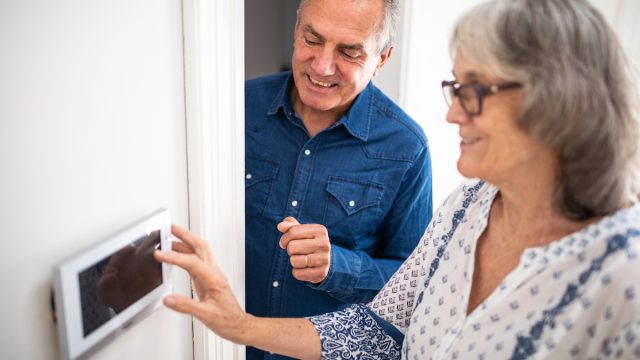
A growing segment of the population is aging, and with this demographic shift has come a renewed interest in the needs of older people. According to a 2021 AARP survey, 75 percent of adults 50 and older hope to remain in their homes as a long-term choice. “Multi-generational” homes are in increasing demand, leading to a growing focus in architecture and design that considers elders with limited mobility as well as privacy and ease of living for everyone.
Not everyone can design their own home, of course. Some older adults plan to downsize or move to a condo or senior community. But if you plan to stay in your home for the foreseeable future, you may want to consider making some changes so you—and your friends and family—can stay safe and active at home, even with the physical limitations that may come with older age. Read on to hear from home and senior experts about the 10 home upgrades you should make if you’re over 65.
READ THIS NEXT: 5 Bedding Upgrades You Should Make If You’re Over 60, According to Experts.
1
Make use of smart home technology.

“Smart home tech is a great way to make life easier around the house, as you can control home devices with a tablet or a smartphone,” says Aaron Green, owner at Essential Home and Garden. “Home systems for turning on the lights or heating make it possible to be more independent. Additionally, medical alert systems like fall detectors and environmental monitoring systems could be crucial.”
Lucia Chang, owner and founder of Senior Wing, which provides information to help seniors live independently, suggests installing a smart home security system or doorbell so you can see who is at your door from wherever you are. “Make sure the doorbell is loud enough to hear from all rooms. Some smart locks let you give a caregiver a temporary code to enter on their own, if desired,” she says.
Whole-house systems like Alexa have options that work well for seniors. Amazon’s Alexa Together subscription, for example, uses a combination of wireless voice technology, GPS tracking, and advanced sensory components to detect falls and provide 24-hour hands-free access to emergency response. It’s a powerful medical alert option for someone with disabilities.
2
Look to the lighting.

Lighting may not be what you think of first, but if you’re over 65, you’ll want to ensure your space is very well-lit.
“Truly, I’ve never met any space that was too bright,” says Robin Burrill, certified aging-in-place specialist with the National Association of Home Builders and CEO/principal designer for Signature Home Services. “This is especially true where there is any change in height, going up and down stairs inside or outside. We have a tendency to get comfortable, and as we get older to not pick our feet up as much, so having that light can be a reminder.”
Burrill also recommends motion-sensor lighting, so you’ll avoid fumbling for the light switch in the dark. “This is especially great for walkways outside or even in areas of the home that say you don’t go in that often. And having those lights come on outside when you let the pets out is an added plus.”
READ THIS NEXT: The 6 Best Small Towns to Retire In.
3
Adjust heights in the kitchen.

The kitchen is another area we may overlook, but it’s a space with several barriers to comfort and function.
“Depending on the height of the individual, raising or lowering the height of countertops in the kitchen is very popular,” says Burrill. “For those choosing to stay in their homes, they aren’t concerned with resale, so they just make it their own.” Those in wheelchairs or who need to sit while cooking may require lower counters, while taller folks may have fewer backaches with higher counters.
Appliances also matter. “Considering different types of ovens is key. Being able to place ovens at different heights—this can make the world of difference,” notes Burrill. “Getting dishwasher drawers instead of full height dishwashers is also an option for those with bad backs or who don’t have need of a full one as well.” And today, refrigerators and freezers come in all different configurations, so it’s easy to find one that suits your needs.
Storage spaces that don’t require lifting items into overhead cabinets, as well as pull-out drawers and trays, also make the kitchen easier to enjoy.
4
Add safety features in the bathroom.
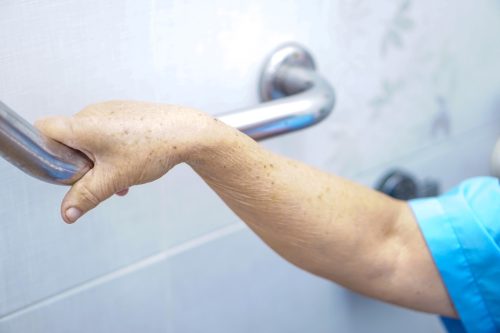
Bathrooms are infamous for causing falls due to wet floors. The bathroom can also be difficult to navigate for seniors who can’t easily raise and lower themselves in tight spaces. A step-in shower (with a portable or built-in seat or bench) is a much better option than having to step over a tub wall. A hand shower in addition to an overhead spray is also a must.
“Installing grab bars in the shower and anywhere else where a person might need stability is a great start,” shares Michael Green, MD, OB/GYN and chief medical officer at Winona, a female-founded anti-aging wellness center. “Raising one’s toilet seat is another safety feature to consider because it shortens the distance a person has to bend to reach it. You may also consider adhering a slip-proof texture to the bottom of your tub or shower, as mats can cause a tripping hazard.”
For more aging advice delivered straight to your inbox, sign up for our daily newsletter.
5
Enlarge doorways for wheelchair access.
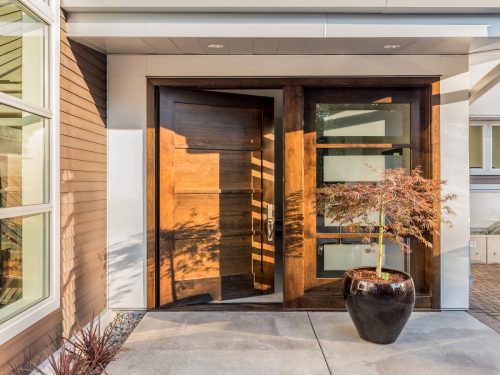
Another upgrade you might not otherwise think of until it’s needed—widening doorways to accommodate a wheelchair. Doors can be changed to suit the style of your home; sliding pocket doors, for example, work well in wider doorways. “For easier navigation with wheelchairs or other large mobility aids, open up key rooms where appropriate, such as by removing a kitchen island,” Chang adds.
6
Ditch the carpet.
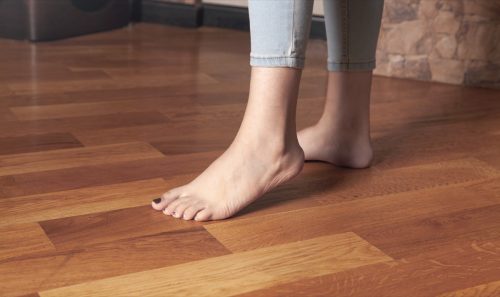
Though carpeting may seem soft and cozy, it’s easy to get tripped up on it. “To accommodate rolling mobility devices, replace carpeting with smooth, hard flooring, but avoid slippery surfaces such as marble, painted floors, or wax polish,” advises Chang. Hardwood floors are also easier to clean than carpets, and they’re less likely to harbor dust and allergens.
Chang also advises against using area rugs, “which can slide easily.” If you do have them, be sure that rugs have rubber pads underneath to keep them firmly anchored in place.
READ THIS NEXT: 7 House Hunting Tips If You’re Over 60, According to Real Estate Experts.
7
Use aging-friendly hardware and raise the outlets.
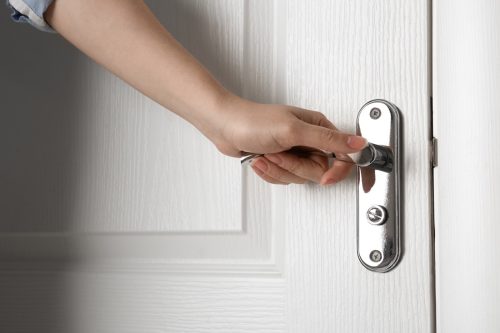
Relocating outlets to 18 inches above floor level makes them easier to reach while standing or seated. And though the position of your hardware is probably OK, round doorknobs on doors, cabinets, and drawers can be difficult to turn or grasp. Burrill suggests replacing all the handles throughout your home with levers, pulls, or push-to-open cabinet doors and drawers.
8
Arrange for one-level living.
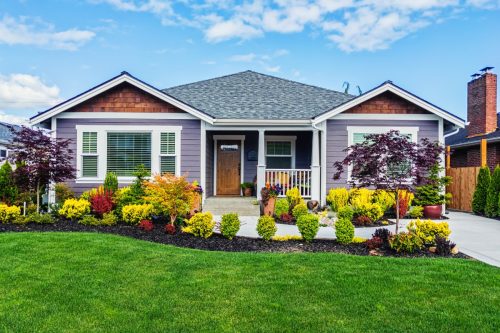
The ideal multi-generational home would be a single-story dwelling, but that’s not always possible. If you have a multi-story home, “arrange for one bedroom and one full bathroom to be on the ground level together with the kitchen,” suggests Chang. “This setup allows you to avoid using the stairs if you are experiencing mobility challenges or recovering from surgery.” Laundry facilities should be located here as well.
READ THIS NEXT: Never Include These 2 Things in Your Will, Experts Warn.
9
Invest in a lift or ramp.
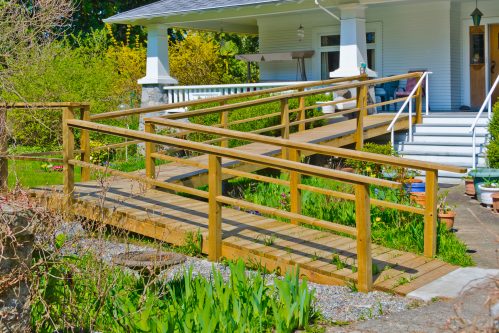
Another option for homes with unmanageable stairs is to install a stairlift. “A stair lift is a motorized chair that travels along a track mounted to your stairs, allowing you to safely and easily ascend and descend,” explains Diana Cox, founder of The Gardening Talk. “Stairlifts come in various models and can be customized to fit your specific needs and budget.” For entryways with just a few steps, installing a ramp is another smart idea.
10
Don’t ignore the outdoors.
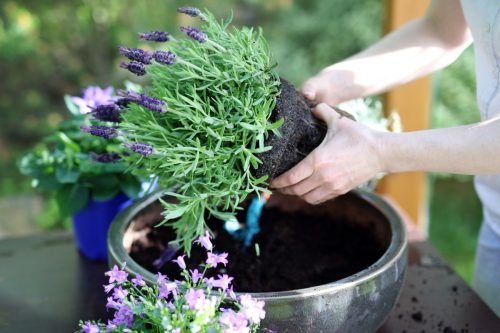
Everyone loves spending time outdoors, and if your home has a garden or yard, it’s a great way to get moving and soak up some sun. Making exterior spaces accessible gives you more options for enjoying outdoor living. Use lights that turn on automatically after dark. For gardeners, create raised garden boxes instead of ground-level flower beds to avoid having to bend over to tend to the greenery. Purchase or build stable seating options for yard work.
As an added luxury, Burrill suggests heated outdoor walkways: “Even in Texas, there have been a couple times when I would have liked to not have an icy sidewalk.”